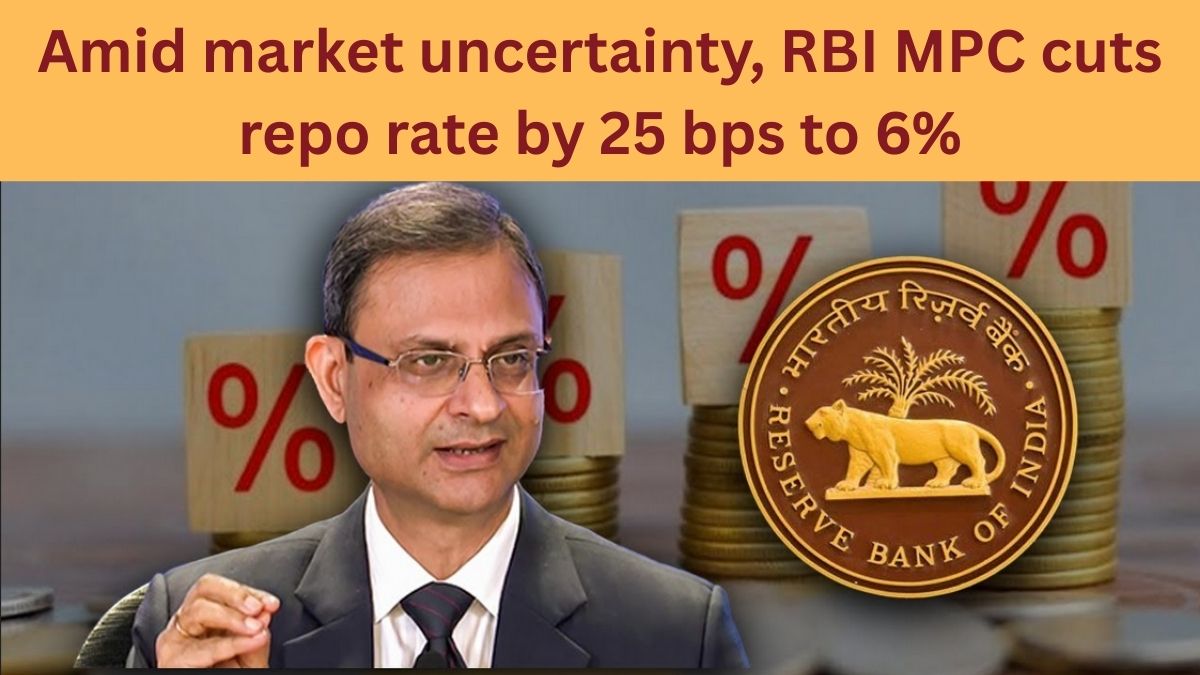The Reserve Bank of India (RBI) has reduced the repo rate by 25 basis points, bringing it down to 6%. This monetary policy decision signals a shift toward a more accommodative interest rate environment, and for both existing and prospective home loan borrowers, this move could significantly impact borrowing costs.
But the effects of a repo rate cut aren’t uniform across all borrowers. Whether you benefit—or miss out—depends on how your home loan is structured. Let’s break it down.

Understanding the Repo Rate and Its Impact
The repo rate is the interest rate at which the RBI lends to commercial banks. A reduction in this rate typically leads to lower lending rates, including home loans. However, the speed and extent of the benefit reaching consumers depend on the type of loan linkage—whether it’s repo-linked, MCLR-linked, or tied to older benchmarks.
Who Benefits from the Rate Cut?
Existing Borrowers with Repo-Linked Loans
If your home loan is already tied to the repo rate, this is good news. These loans are designed to move in sync with RBI’s policy rate changes. The reduction should be passed on quickly, often within three months, depending on your loan reset period.
Borrowers with MCLR or Base Rate Loans
Unfortunately, many borrowers are still linked to outdated benchmarks like the Marginal Cost of Funds-Based Lending Rate (MCLR) or the Base Rate. Around 50% of home loans from government banks fall into this category, while another 2% are tied to the older Base Rate.
These older benchmarks are slower to adjust. Even if your bank eventually lowers rates, the change might be smaller and delayed compared to repo-linked loans.
Comparison of Loan Types and Rate Adjustment Speed
| Loan Type | Linked Benchmark | Rate Adjustment Speed | Eligible for Full Rate Cut? |
|---|---|---|---|
| Repo-Linked Loans | RBI Repo Rate | Fast (quarterly or earlier) | Yes |
| MCLR-Linked Loans | MCLR (internal benchmark) | Slow (reviewed every 6-12 months) | Partially |
| Base Rate-Linked Loans | Base Rate (obsolete) | Very Slow | Unlikely |
Should You Consider Refinancing?
Refinancing can be a smart strategy—especially if your current interest rate is significantly above prevailing market rates. As of now, top-tier borrowers are being offered home loan rates between 8.10% and 8.35%, and these could fall below 8% soon.
When Does Refinancing Make Sense?
-
Your existing loan is linked to MCLR or Base Rate.
-
Your interest rate is 50 basis points or more above the current market rate.
-
You plan to stay in the home long enough to recover the cost of switching (processing fees, legal costs, etc.).
Before taking the plunge, ask your lender about your current loan’s benchmark and calculate the cost-benefit of switching. Use online refinance calculators to assess total savings over the remaining loan tenure.
Tips for New Homebuyers
If you’re planning to buy a property, this is a favorable moment. Falling interest rates can help you secure a more affordable loan and reduce your Equated Monthly Installments (EMIs).
Key Considerations:
-
Check Your Credit Score: A score above 750 typically qualifies you for the best rates.
-
Compare Offers: Don’t settle for the first quote. Compare rates from multiple lenders, including housing finance companies.
-
Negotiate Terms: High creditworthiness gives you leverage to negotiate better terms, such as lower processing fees or flexible repayment options.
Financial Discipline Still Matters
Lower interest rates can make borrowing more attractive, but caution is essential. Avoid stretching your finances just because EMIs appear manageable.
Borrowing Wisely:
-
Ensure your EMI outgo doesn’t exceed 40% of your monthly income.
-
Maintain a solid emergency fund to cover unexpected expenses or income disruption.
-
Borrow only what you can comfortably repay—even if you qualify for a higher amount.
Frequently Asked Questions
Q1. How soon will my EMI reduce after the repo rate cut?
If you have a repo-linked loan, the change should reflect within a quarter, depending on your reset date. For MCLR or Base Rate loans, the delay could be several months or more.
Q2. Should I shift from MCLR to repo-linked loans?
Yes, if your current rate is significantly higher and you’re eligible for better terms. Check switching costs and calculate net savings before making a decision.
Q3. Can new homebuyers expect more rate cuts?
Possibly. The repo rate cut suggests a trend toward easing rates. If inflation stays under control, further cuts may follow, making home loans even cheaper.
Q4. Are all banks offering repo-linked loans?
All major banks offer repo-linked products, especially for new borrowers. Some older loans may still be under MCLR or Base Rate unless refinanced.
Q5. Is a low interest rate the only factor to consider in a home loan?
Not at all. Also consider loan tenure, processing fees, prepayment penalties (if any), and customer service. A slightly higher rate with better terms may be more beneficial in the long run.
Click here to know more.
